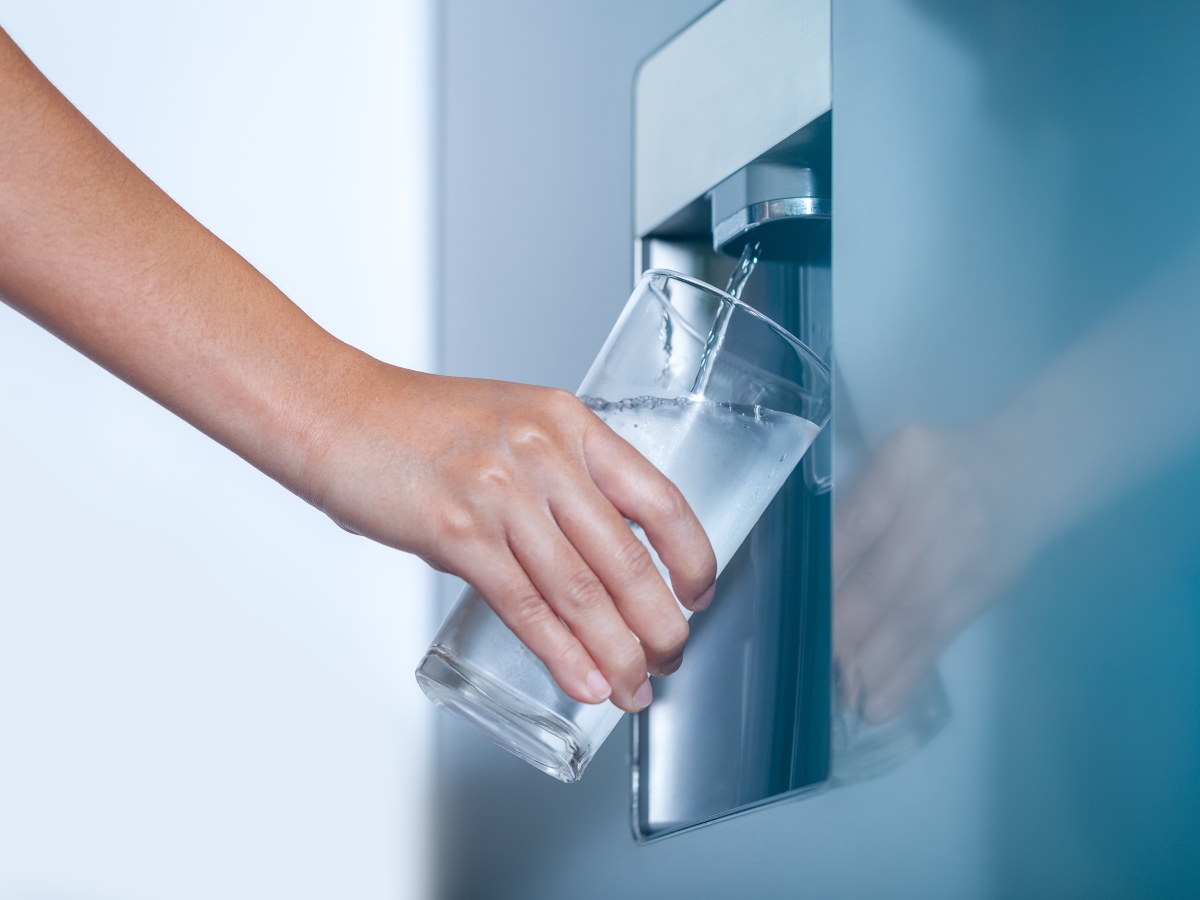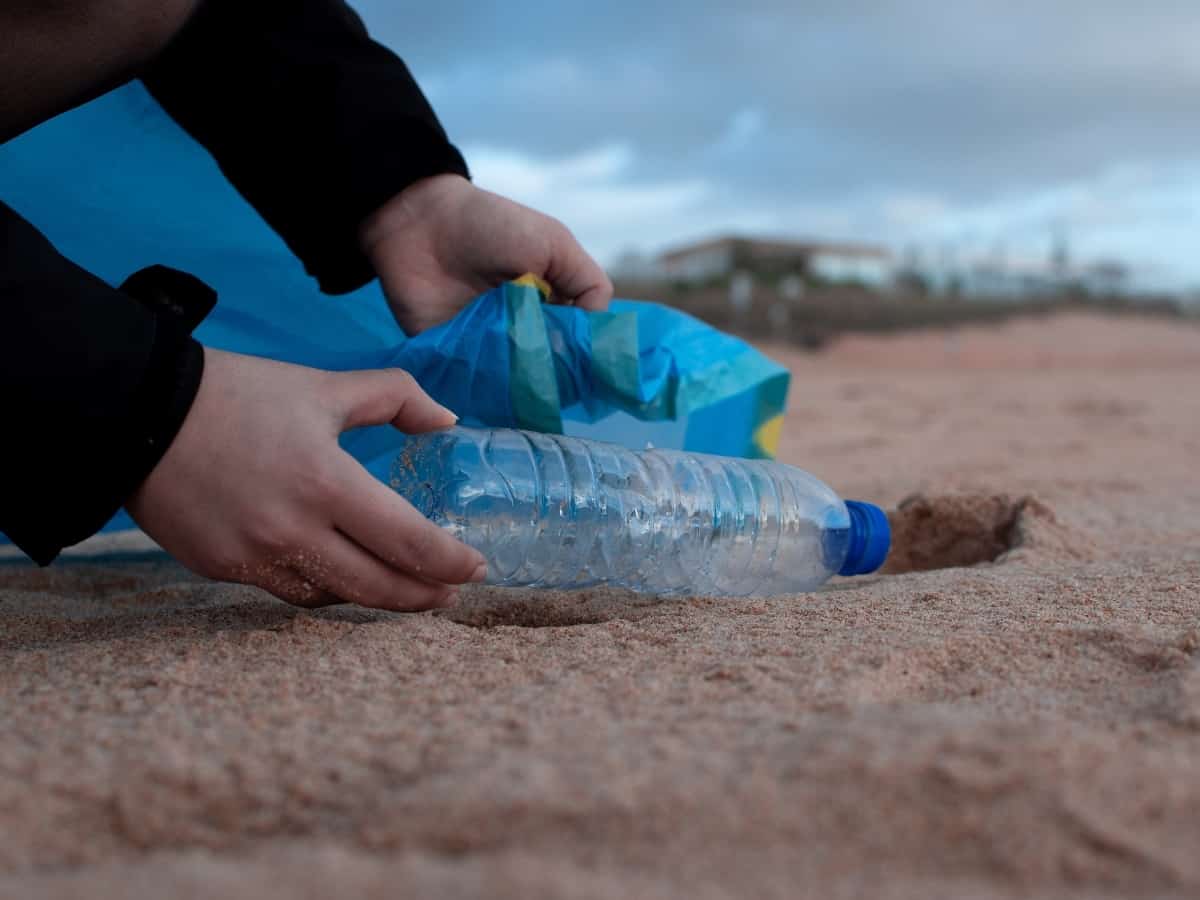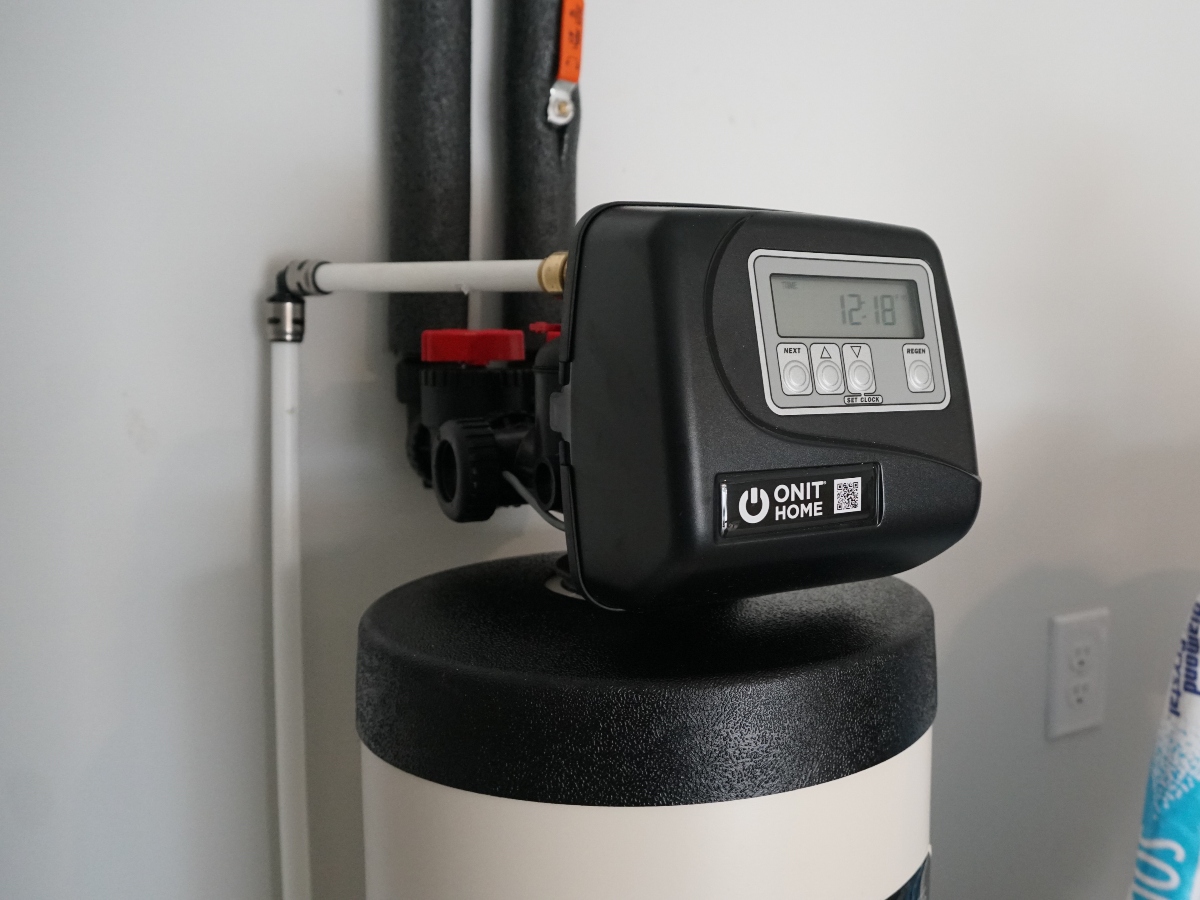Did you know that changing your home to a full home water filtration system can save a family of four over $870 a year? It’s true! There are a few factors that cause families to overspend on temporary ways to filter their water, when they could save money and have a stronger, more reliable home water filtration system.
There are tons of water filtration options available, but it’s important to understand the value of the filtration system and additional costs.
Why You Should Ditch the Filtered Pitchers and Fridge Filters
Filtered Pitchers
Having a reusable water filter in a pitcher seems like a perfect solution to tap water, but do you really know if those filters work? Pitchers and dispensers like Brita are a popular choice for easy, DIY filtration. They’ve been around for awhile, and their products are readily available both online and in stores at a cheaper price. However, cheaper prices can relate to lower functionality.
Filters like Brita use a coconut-based activated carbon filter. This sounds like a great filter on paper, however, these filters don’t remove many of potentially harmful contaminants found in most city tap water systems. These filters don’t work to remove contaminants, but rather they reduce certain toxins. For example, filters like Brita filtered pitchers remove the taste and odor of chlorine, but they don’t claim to remove the chemical itself.
Additionally, these filters will work for the designed amount of time, which is 40 gallons (for a standard) or 120 gallons (for a long lasting filter). A family of four uses an estimated 40 gallons of water each month. Or, if opting for the 120 gallons, every two to three months. Once the 40 gallons of water is filtered through, the filter ceases to function and can cause bacteria growth if not routinely replaced. These filters range in price from $6.58 for 40 gallons, or $16.99 for 120 gallons. There’s a convenience to buying and installing it yourself, but there’s an inconvenience with frequent replacements and having to continually fill the pitcher yourself.

Fridge Filters
Using refrigerator water filters are so common given that they’re easily accessible in the kitchen. These filters are meant to remove leftover contaminants from tap water at an inexpensive price and without adding another appliance. Like pitcher filters, the fridge filters use a coconut activated carbon filter, which effectively reduces the amount of contaminants. However, like the filtered pitchers, these filters don’t actually remove anything. Fridge filters cover up bad tastes and smells in water. But, they’re not reliable to remove particles and bacteria. Additionally, these filters are subject to waterborne bacteria, as the bacteria needs moisture and fungus to survive. This makes your refrigerator water filter a perfect place for bacteria to grow.
Remembering to change this filter can also be an issue. If you don’t remember to change them on time, you might end up consuming harmful bacteria, chemicals, or particles with every cup of water. The dispenser can pick up airborne particles, as well, so regular cleaning and timely replacements are crucial. Each replacement is $14.99, and should be replaced every 300 gallons. This lasts an average of five to six months.
What About Bottled Water or a Bottle Water Service?
A popular option for water is to buy bottled water or have a service that brings gallons to your front door. These bottles can be easy to grab and go, and seem relatively inexpensive upfront. However, have you ever sat down and added up how much money it costs to use bottled water? Or, have you ever considered if the water is clean and worth the impact of using plastic?
Bottled water filters out many of the contaminants found in tap water. However, the main issue is how much plastic is being used and the impacts it can have on your health and the planet. A study on bottled water found that 93% of 259 water bottles tested positive for microplastic contamination. Additionally, plastic contains a chemical called Bisphenol-A (BPA). BPA is an industrial chemical, and can leach into your water and lead to health issues. Between filtered water and bottled water, filtered water is healthier for you.
Other than contamination concerns, bottled water costs you money over time. The average cost of one 16.9 ounce plastic water bottle is around $0.70. With the average 4 person household consuming over 720 gallons of water, that price can make an impact in your wallet. Additionally, having a water bottle service has recurring costs. After the initial cooler ranging from $99.99 to $159.99, water bottle services have monthly fees. An average family of four will need to buy around 12, five gallon bottles a month. With a company like Ozarka, prices are at $7.99 for each gallon, costing $95.88/monthly, plus delivery fees.

Environmental Impact of Plastic Bottle
Plastic doesn’t break down naturally. This leaves our landfills and oceans filled with plastic. So, while water bottles are convenient for us, they’re not convenient for our planet. Instead, the plastic is in our landfills for over 1,000 years before it decomposes.
Berkey Water Filters
The Berkey water filters are gravity fed, and are also a popular choice for homeowners. These filters are known for removing more contaminants than filters like Brita, and they tend to last longer. However, these filters are comparatively more expensive, require maintenance, and can take up room in your kitchen.
Berkey filters use a carbon composite that contains high-grade coconut shell carbon, combined with a proprietary blend of five additional media. These filters remove contaminants like chloramines, pharmaceuticals, pesticides, heavy metals, and other potentially harmful elements. However, the filter doesn’t explicitly state if contaminants like nitrate, E. coli, or arsenic are removed or reduced from the water.
As mentioned above, these filters aren’t cheap, often ranging from $249 to $360 to be replaced every four years or 6,000 gallons. There’s also an additional cost of $120 if you want to upgrade your system to filter out fluoride and reduce arsenic. These additional filters need to be replaced every six months or 1,000 gallons and cost $65.
Convenience wise, the Berkey filters aren’t the easiest to have and maintain. These filters refill from empty, and can only hold 2.25 gallons. An average family of four drinks two gallons of water every day, therefore you will likely need to refill the gravity filter daily. With the filter being gravity fed, refilling can be a slow process. Additionally, these filters take up counter space, with some models being larger than others and requiring frequent maintenance.
Understanding the Home Water Filtration System
So, knowing that the filters like a Brita, water bottle services, fridge water, and gravity filters won’t work that well for removing toxins and chemicals- what’s the best choice? That’s where the whole home water filtration system comes in. Having a home filtration system can assist you with both having great, clean water but also help you save money in the long run.
As stated, the best choice for a home filtration system is a professionally installed reverse osmosis home water system. These systems remove the majority of the contaminants in drinking water, rather than just reducing them. A reverse osmosis system cleans water through multiple chambers and stages.
Reverse Osmosis Home Filtration System System Stages
- The first stage is the Sediment and Activated Carbon Block Module. This stage removes traces of Chlorine and microscopic debris from the water.
- Next, the second stage is the Reverse Osmosis Chamber. This step removes the trapped tiny particles, pollutants, fluoride and trihalomethanes from the prefilters.
- Third, the water will go through the Granular Activated Carbon. This removes the organic and odorous chemicals, like hydrogen sulfide. However, the reverse osmosis system removes it and keeps your water smelling and tasting fresh!
- The last stage is the In-Line Polishing Filter. This removes any remaining foul tastes and odors in the water, boosting the pH and giving you water bottle quality tastes.
Having a reverse osmosis system in your home allows you to have clean drinking water straight out of the tap, giving you and your family easy access to the best water. This system is installed out of sight, allowing you to have ample storage space in your kitchen, and you’ll never have to fill it up. These systems are easy maintenance, only having to replace pre and post filters annually, and replacing the reverse osmosis membrane every two to three years.

The Cost Breakdown of a Home Water Filtration System
Switching to the whole home softening and filtration system reduces your expenses and helps you save up to $870 every year. Here’s how you can make huge savings by making the switch.
- You can save up to $324 annually by eliminating bottled water purchases. Having an ONIT water system filters your tap water into high-quality water, giving you the taste you want, without the recurring cost of bottled water. The average person buys 43.7 gallons of bottled water every year, and the more people in your household equals more gallons of bottled water purchased annually.
- You’re saving up to $420 every year on cleaning products. Having soft water makes your detergent and cleaning products more efficient. Therefore, you will use up to 50% less of your products around your home, saving you those extra grocery store trips.
- Additionally, you’re saving up to $36/year on energy consumption. If you’ve ever looked at your electric bill, you’ll see that your water heater can account for around 13% of your monthly bill. If you have hard water in your home, your water heaters are working harder to warm up the water because of the mineral buildup. Having soft water reduces your energy consumption by up to 20%.
- Lastly, you’re able to save up to $90/year on your plumbing and appliance maintenance. Having soft water reduces the buildup, keeping your pipes from clogging. Reducing hard water problems can help you save up to 75% every year.
ONIT Installs, You Get Clean and Healthy Water
Having a Reverse Osmosis system in your home gives you clean and tasty water at the ease of turning on the faucet. You can have a professional installation and the benefits of drinking filtered water. Visit us online for more information, or speak to an ONIT water specialist today at 1-833-433-0331 to upgrade your home water filtration system, and save big when you bundle.



